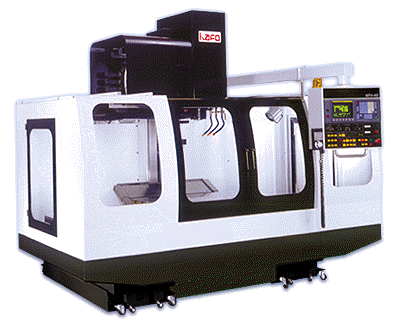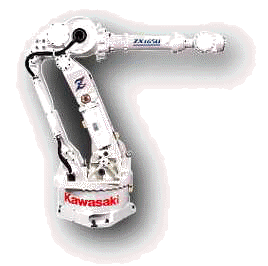
Vertical CNC Milling Machine1
Computer Aided Manufacturing (CAM)
[COM, TL, CF]
A detailed discussion of Computer Aided Manufacturing (CAM) is beyond the scope of this course. Nevertheless, CAM technology is closely coupled with CAD. Actually, computer aided manufacturing uses the result of a computer aided design to produce products. The combination of CAD and CAM has had the effect of radically increasing productivity and accuracy.
Using CAM in combination with CAD means that a paper version of an engineering drawing need never be produced. The output of the CAD system is a drawing stored in a geometric data base. This drawing is transmitted directly into the CAM equipment. CAM equipment generally falls into one of two categories:
Computer Numerical Control (CNC)
Computer Numerical Control is one method of transmitting design information from computer to a machine center. In CNC systems, workers do not need to interpret engineering drawings. Because the data is fed directly into the CNC system, precision and production speed can be maximized while human errors are minimized. CNC systems shine in high volume production environments. At the present time, prototyping and custom machining are not suitable for CNC systems because a significant amount of time is needed to enter the data into the system before these machines can do their work.

Vertical CNC Milling Machine1
Robotics
The other part of CAM is known as robotics. The primary difference between CNC machinery and robotics is range of movement. Automatic manipulators are used to perform a variety of material handling functions. These manipulators can grasp, operate, assemble, and handle with great consistency and dependability.
Robots are often employed to perform tasks that are considered too difficult, dangerous, or monotonous for human workers. Their range of tasks include:
Working in extremely high or low temperature environments.
Working in toxic environments (e.g. spray painting).
Exerting great forces (e.g. lifting or moving heavy products).
Working with delicate parts (e.g. adjusting electronic systems and components).

Industrial Robot Arm2

Industrial Welding Robot in Action3
1Courtesy of Kafo Machinery Co.; 2Courtesy of Kawasaki Robotics Inc.; 3Courtesy of American Robotics Inc.